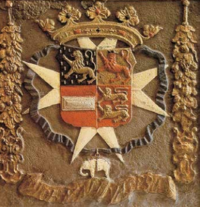Que leão é esse? Significados de leões em marcas comerciais em Pernambuco entre 1904 e 1920
No Brasil, Juntas Comerciais, leis e demais instituições que têm por finalidade proteger marcas por meio de registro começaram a ser criadas em 1876. A Junta Comercial de Pernambuco remonta a essa data. O acervo relativo aos seus primeiros 50 anos se encontra digitalizado e é objeto desta pesquisa. Nesse acervo, é possível constatar que algumas representações são recorrentes e, entre elas, a de maior incidência é a do leão, em especial o “Leão do Norte”. O leão se tornou representante de Pernambuco e muitas vezes representa também pessoas ou grupo de pessoas que por lá nasceram. Nesta dissertação, sob a luz da semiótica de Charles Sander Peirce, são traçados os caminhos dos vetores socioeconômicos e culturais que conferem significação ao signo do leão tornando o Leão do Norte um símbolo de Pernambuco e dos pernambucanos e como ele passa a operar em marcas comerciais. A descrição desses vetores teve por objetivo buscar respostas para alguns dos muitos questionamentos suscitados, entre eles: Que Leão é esse? De onde vem esse codinome “Leão do Norte”? Como ele passa a fazer parte do mundo comercial e industrial do Estado no registro oficial de diversas marcas no período em foco? Por fim, foram analisados individualmente doze registros, num recorte temporal entre 1904 e 1920, que apresentam o leão. Nesses registros, observam-se as transformações na apresentação visual e na identidade por que passa o leão, para melhor se adequar à atividade de leão vendedor.
In Brazil, Boards of Trade, laws and agencies responsible for protecting trademark registration were created in 1896, from which date the Pernambuco Board of Trade exists. The archives from its first 50 years have been digitalized and form the basis of the present research. In these archives, the recurrence of a number of images can be observed, the largest number those of lions. In particular, the Lion of the North. This Lion became the representative of the state of Pernambuco and often also was used to refer to persons or groups of people born in this state. In this dissertation, using the semiotic theories of Peirce, the courses of the socioeconomic and cultural vectors which confer signification to the sign of the Lion are traced from its place as Lion of the North, symbol of the state of Pernambuco and its inhabitants to the use of the lion as trademark. The description of these vectors try to answer some of the questions arising from this transition: What Lion is this? Where does the nickname “Lion of the North” come from? How did the Lion come to be an element in the trademarks of commerce and industry in the official registers of trademarks during the period in focus? Finally, 12 (twelve) trademarks registered between 1904 and 1920 having a lion as part of the mark were analyzed. In these registers, the transformation of the appearance and identity of the Lion may be observed as it was made to conform to the activity of the lion as salesman.
